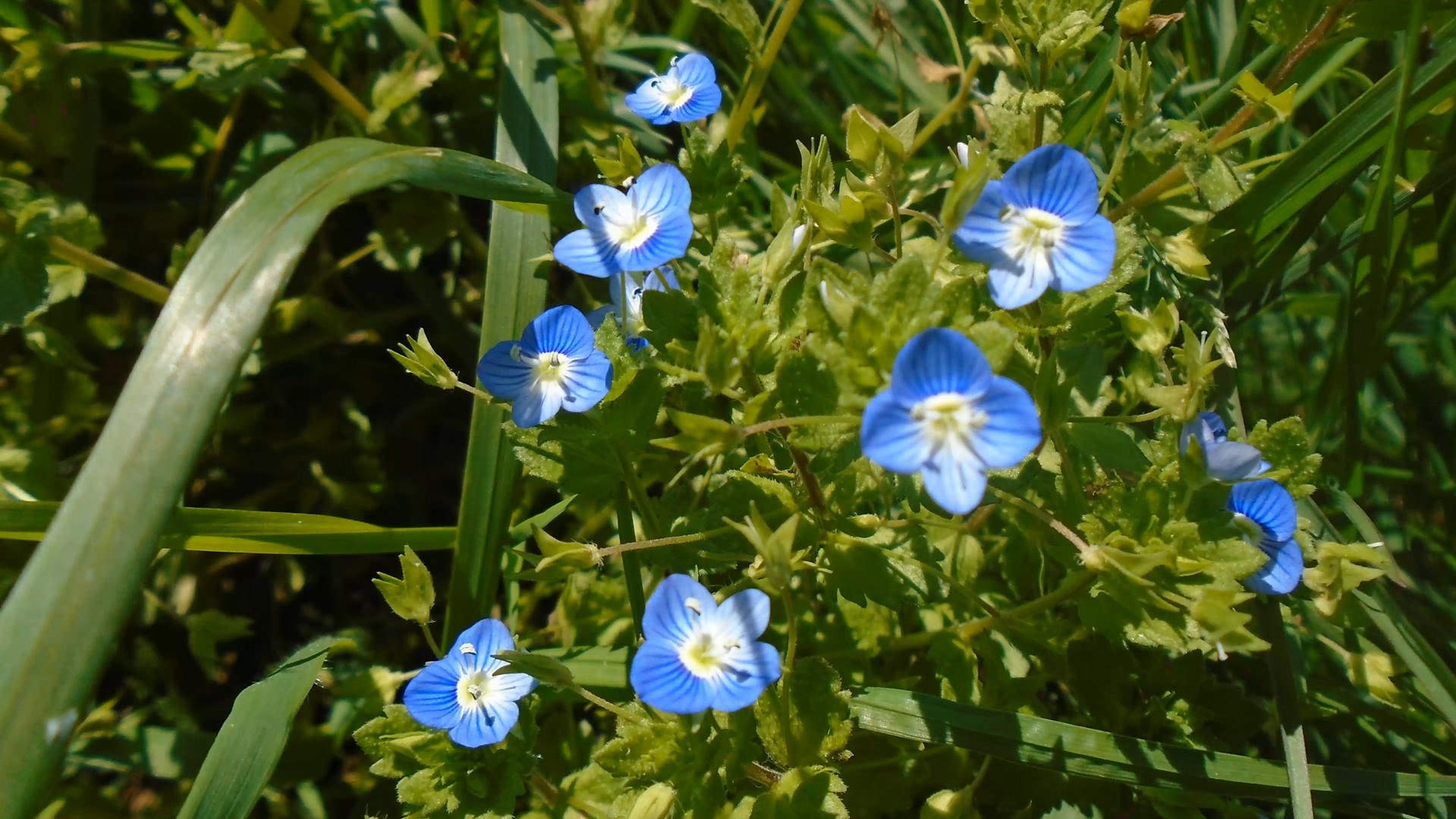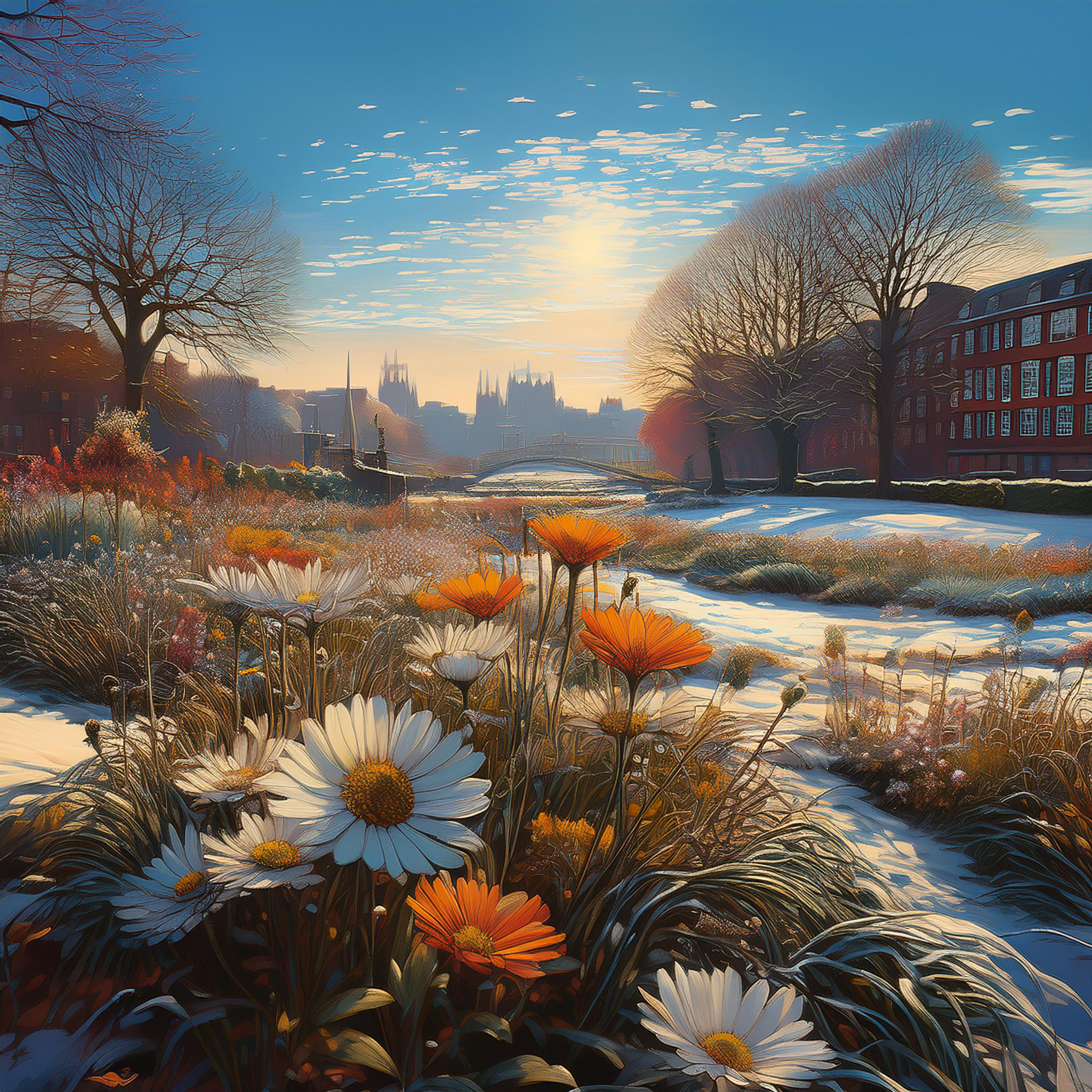
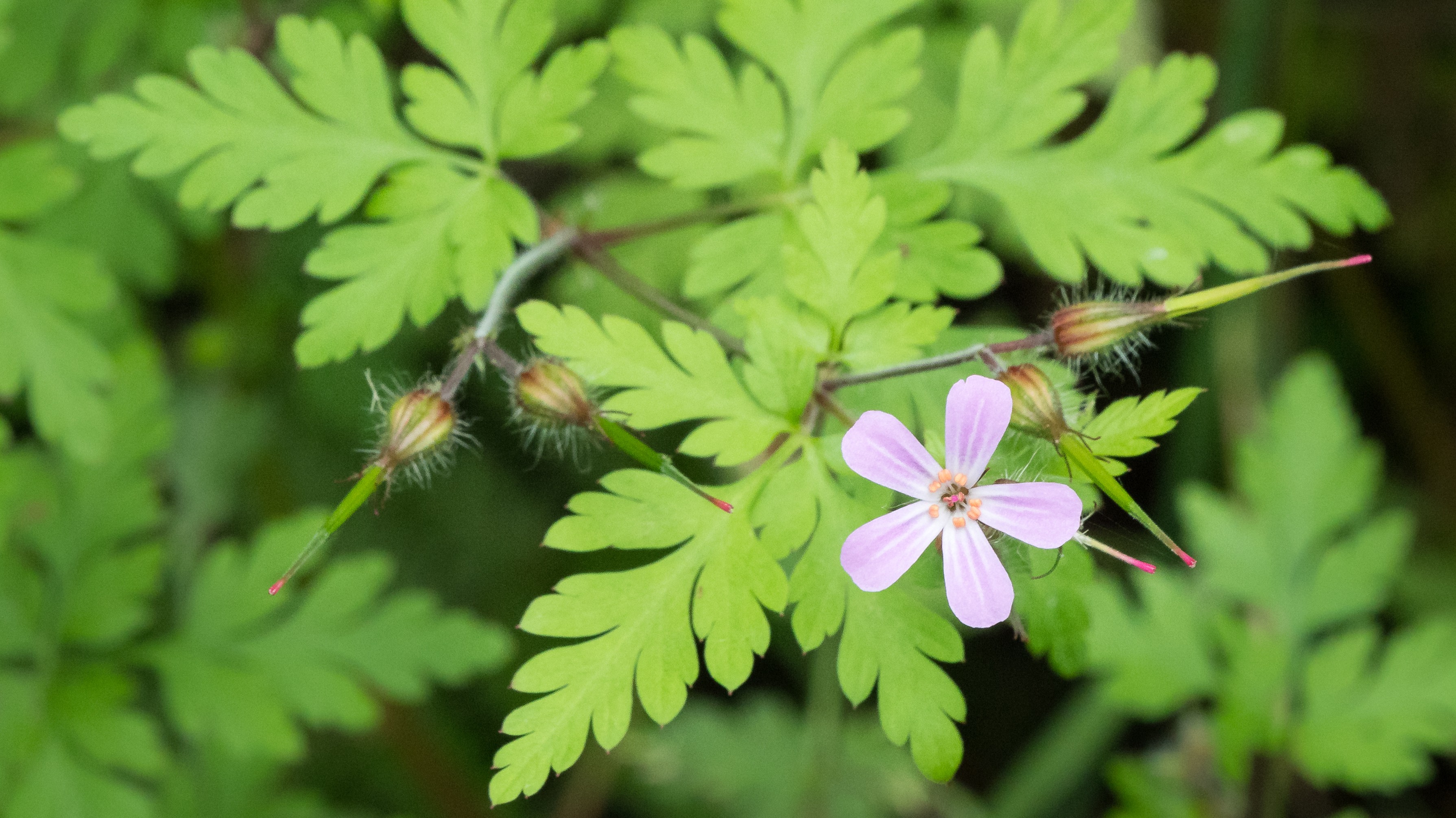

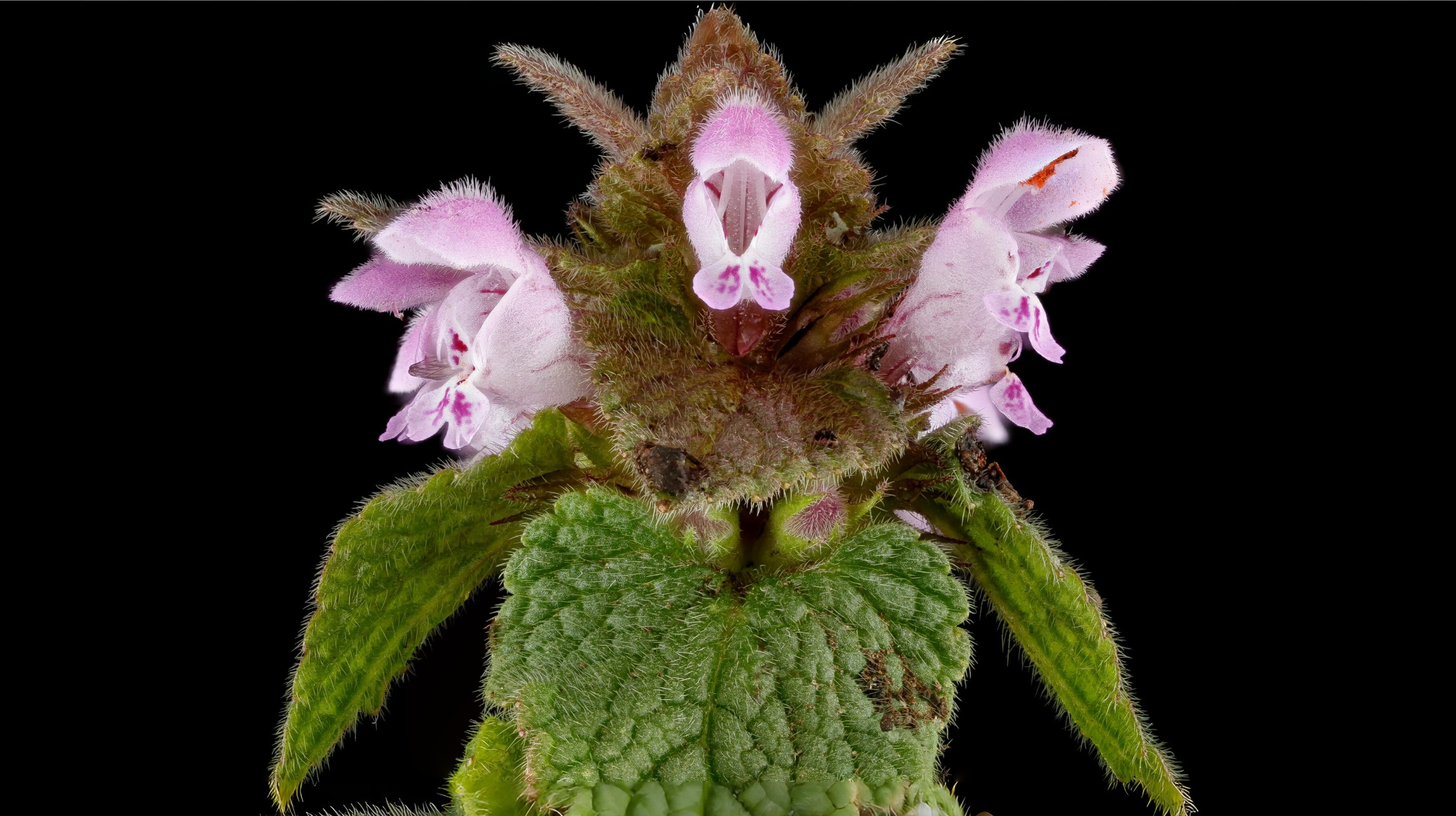

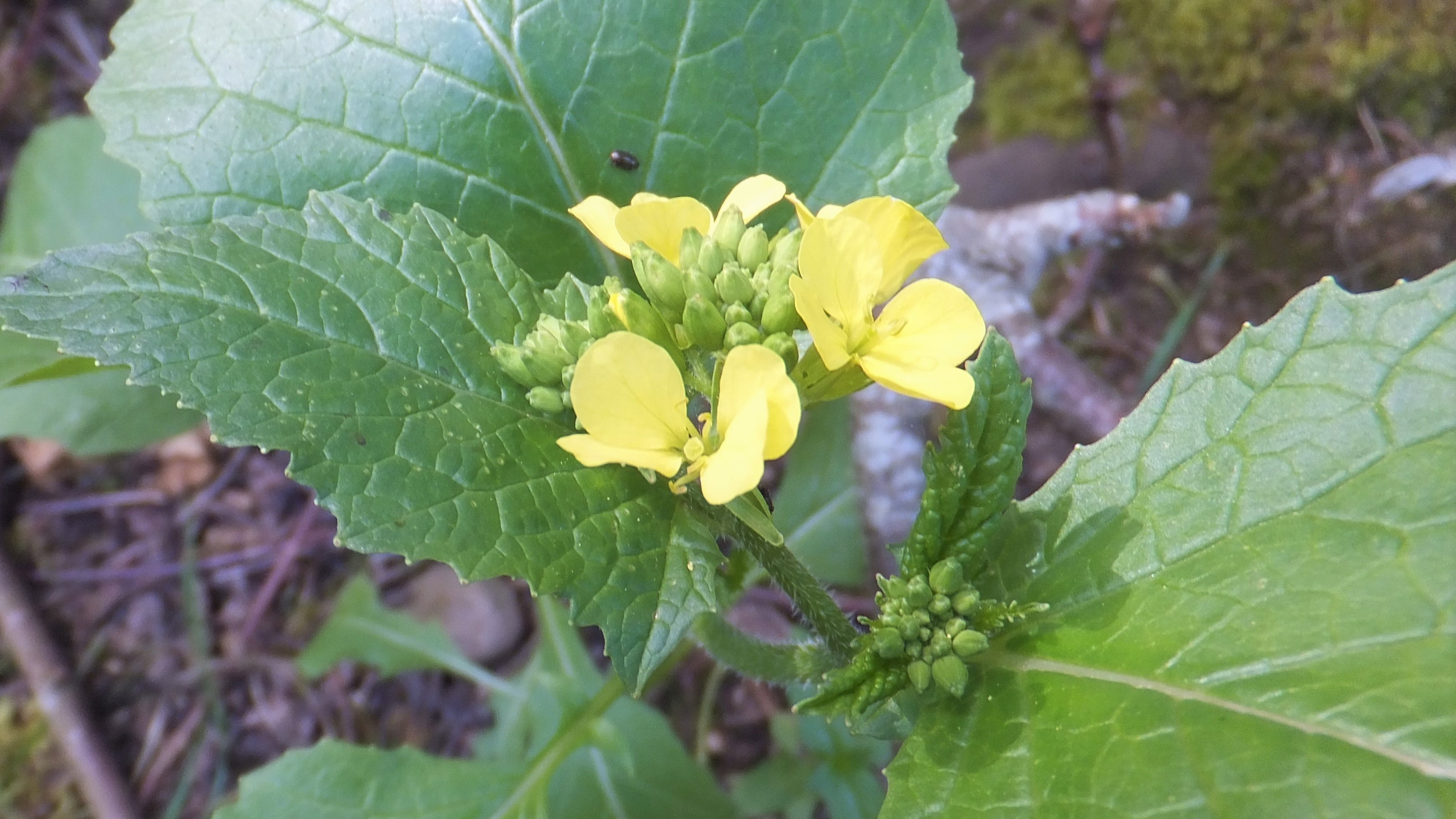

Certainly it is known that charlock was sold as spinach in Dublin, its coarse, hairy leaves improving from being boiled before they were eaten. Similarly, chickweed was sold in bunches for use in salads and also made into chickweed water which was believed to be a good treatment for obesity. Chickweed poultices were also used to treat carbuncles. The seeds of both had other uses. Charlock seeds were made into a mustard oil and chickweed seeds were sold as food for caged birds.
The remains of hogweed Heracleum sphondylium, nipplewort Lapsana communis and a dock Rumex obstusifolius also stood out above any fresh new green leaf growth.
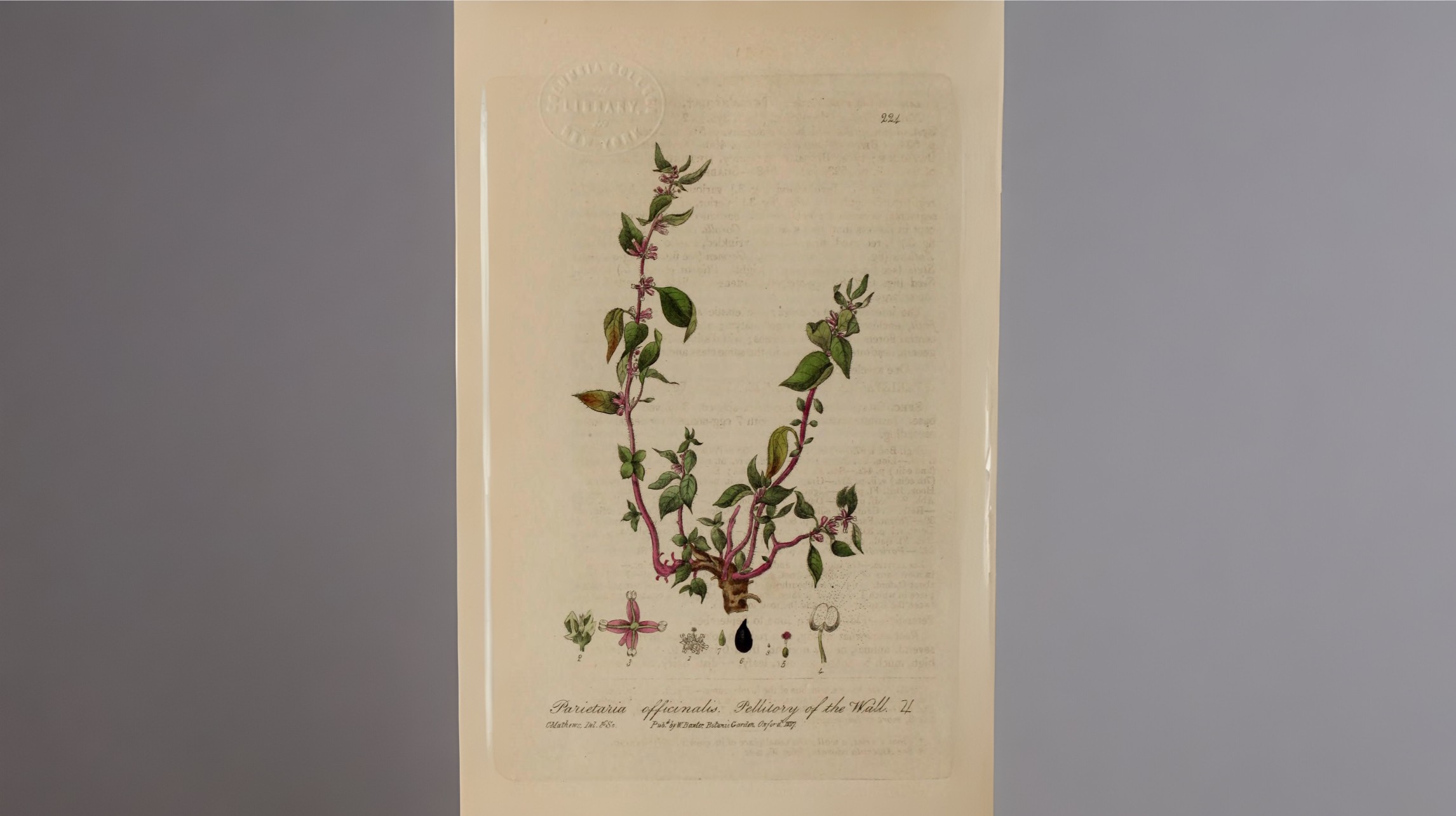

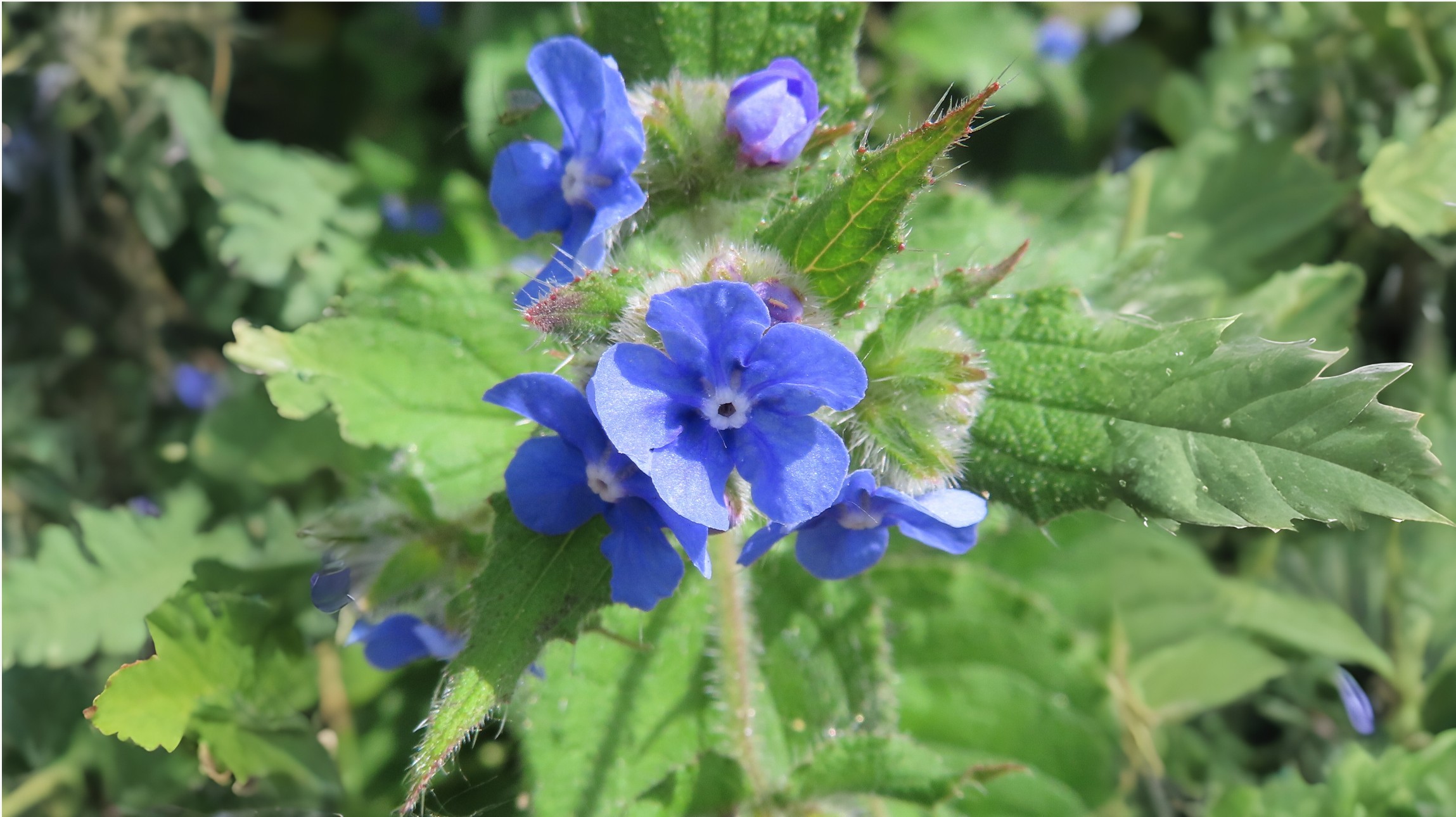

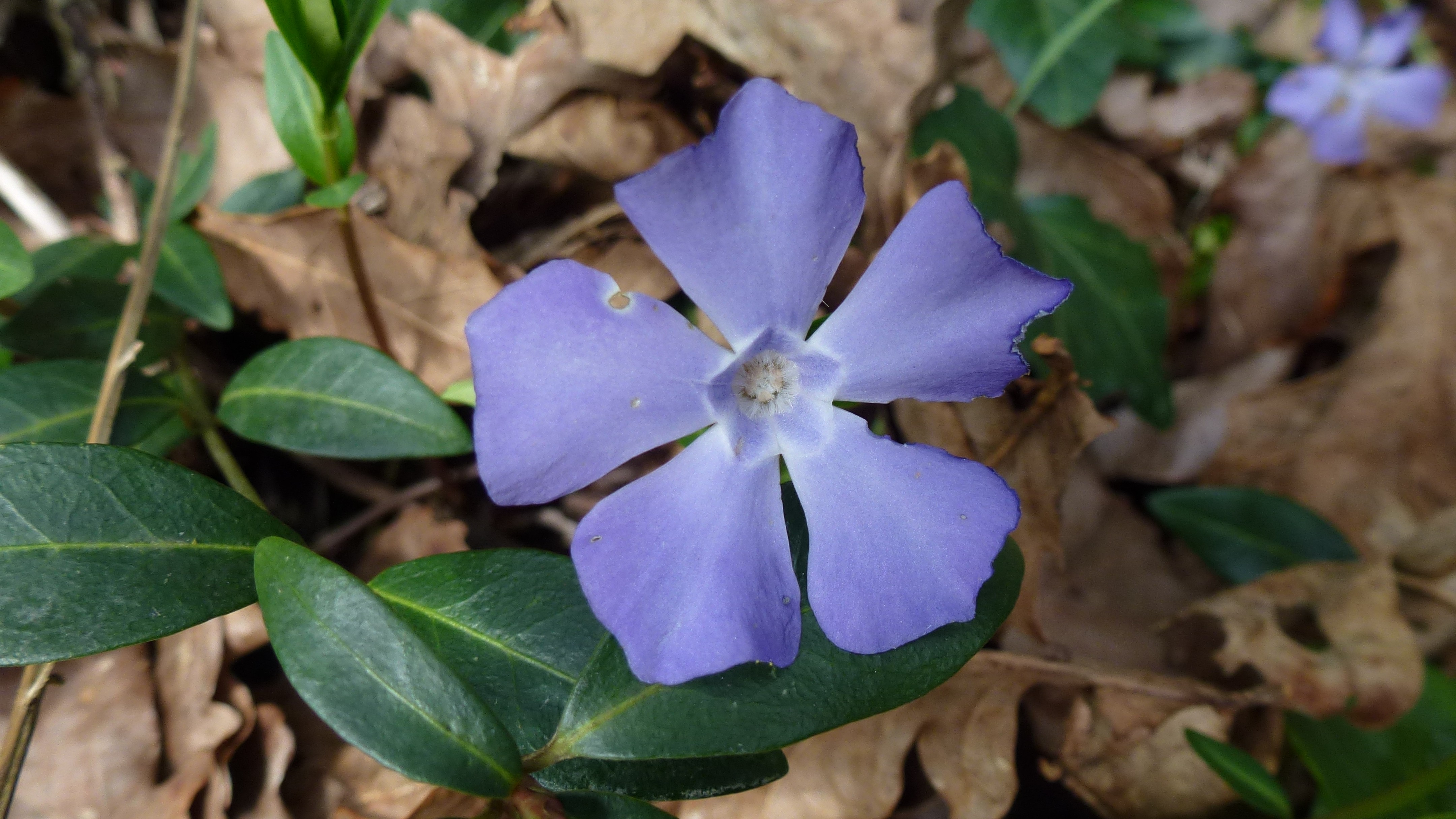

In woodland it is worth keeping an eye out for barren strawberry Potentilla sterilis, wood sage Teucrium scorodonia celandine and perhaps both periwinkles Vinca major and V. minor. The periwinkle has many other names including Sorcerer’s violet on account of its use in magic charms.
